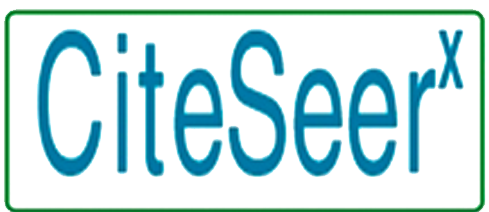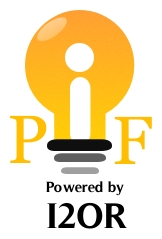Author Guidelines
Authors are able to register and submit items to the journal directly through the journals web site. The Author is asked to upload the item, as well as provide metadata or indexing information associated with the item, to improve the search capacity for research online and for this journal. The Author is also able to accompany an item with Supplementary Files in the form of data sets, research instruments, or source texts that will enrich the item, as well as contribute to more open and robust forms of research and scholarship. The Author is able to track the submission through the editorial process - as well as participate in the copyediting and proofreading of submissions accepted for publication - by logging in and using the username and password provided.
Single MS Word Document file containing Title page, Abstract, Manuscript (MS Word file) should be submitted with every manuscript to identify the person (with address and telephone number) responsible for correspondence concerning the article. This letter should make it clear that the final manuscript has been seen and approved by all authors. Our editors expect that all authors will disclose any commercial associations they have that might give rise to a conflict of interest in connection with the submitted article.
Types of Papers Accepted
- Research Paper
- Review articles
- Short communication
- Case Reports
All paper manuscripts must be written in standard grammatical English. All manuscripts should conform to the Uniform Requirements for Manuscripts Submitted.
Criteria for Manuscript
Submitted manuscripts must meet the following criteria:
1. The material must be original.
2, The writing must be clear, concise and unambiguous.
3. The data should be valid
4. The discussions and conclusions drawn by the authors must be reasonable and supportable.
5. The information must be relevant and interesting.
Manuscript Preparation:-
Page format: Manuscript should be typewritten in Times Roman, 12 font size, single-spaced, the title should be in a font size 14, boldface capitals, with margins of at least one (1.cm) on all sides. All figures and tables should be in the body of the text.
Fonts: Times New Roman and font size should be 12 for content.
Tables: Tables should be numbered consecutively and kept be in the body of the text itself.
Figures: The figures and images should be in JPEG / PNG format with good quality. All the figures must be in the text and be numbered.
The order of Manuscript
1, Title page
2. Abstract
3. Keywords
4. Introduction
5. Materials and Methods
6. Results and Discussion
7. Conclusion
8. Acknowledgments
9. References
1. Title page
Title (Short title)
The title should be relatively short but informative. If a long title is necessary, please prepare an optional short title.
Names (s) of the author (s)
A list of all authors of the paper should be prepared. It should contain full name.
Name and address of workplace (s)
The authors’ affiliations should be indicated in this section with their email id. Either endnote or footnote (endnote recommended) can be used to present additional information (for example: permanent, adequate postal addresses).
Personal E-mail ID’s
At least one e-mail address is needed. It will be used as the corresponding author’s email address in all contacts with the authors.
2. Abstract
An abstract must accompany every article. It should be a brief summary of the significant items of the main paper. An abstract should give concise information about the content of the core idea of your paper. It should be informative and not only present the general scope of the paper but also indicate the main results and conclusions. An Abstract should be a single paragraph without headings and should contains 200-350 words and should not normally exceed 350 words.
3. Keywords
List of all keywords proposed by the authors, separated by semicolon. Up to 4-5 key terms can be selected.
4. Introduction
It should present the subject of paper clearly, indicate the scope of the subject, and present the goals of paper, the novelty of research work and finally the organization of the paper.
5. Materials and Methods
Animals, chemicals, and permission from the animal ethical committee should be mentioned in the first paragraphs. Newly introduced techniques should be described in detail to allow easy repetition. Any modification should be mentioned briefly, with proper references. Techniques which have been previously described should be mentioned in brief only, with proper references, unless they were published in sources that are not easily accessible. The experimental part should be written in sufficient detail to enable others to repeat the authors’ work. Chemical compounds should be named according to the systematic rules of IUPAC or Chemical Abstracts. Units and dimensions should be expressed according to the metric system and SI units.
6. Results and Discussion
It may be combined or kept separate and may be further divided into subsections. It should deal with the major findings and their explanation/interpretations.
7. Conclusion
It should represent the summary of the important findings.
8. Acknowledgments
Information concerning research grant support and the assistance of colleagues or similar notes of appreciation should appear in the Acknowledgements section at the end of the paper.
9. References
The references should be cited in the text in superscript. A complete reference should comprise the following:





















 Street. Viaductweg 186, City. Bruchem, State. Gelderland, Zip code 5314LK, Netherlands
Street. Viaductweg 186, City. Bruchem, State. Gelderland, Zip code 5314LK, Netherlands
 Chat with us on WhatsApp
Chat with us on WhatsApp